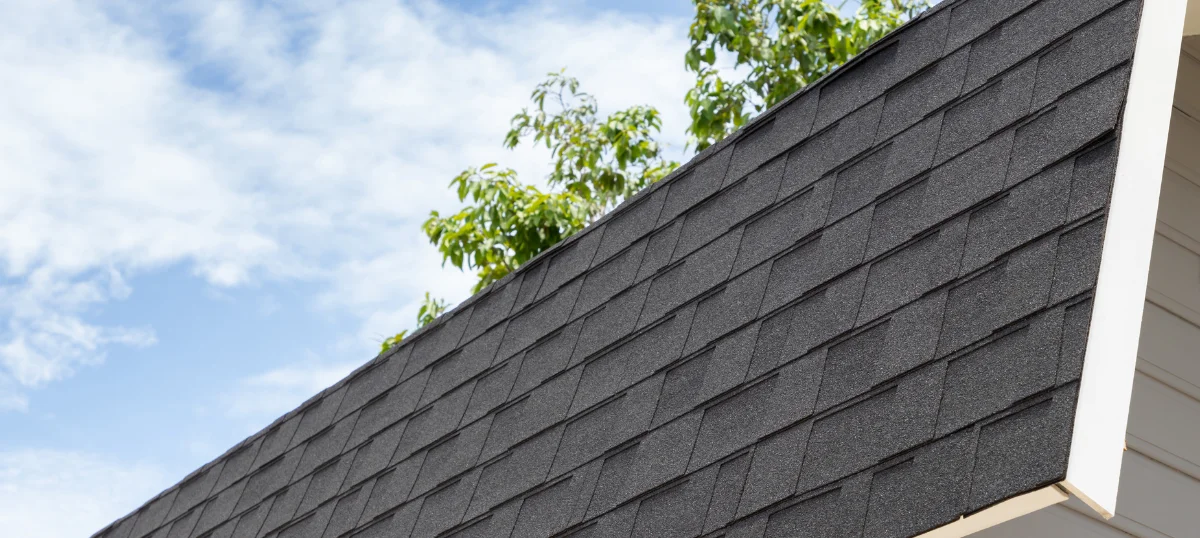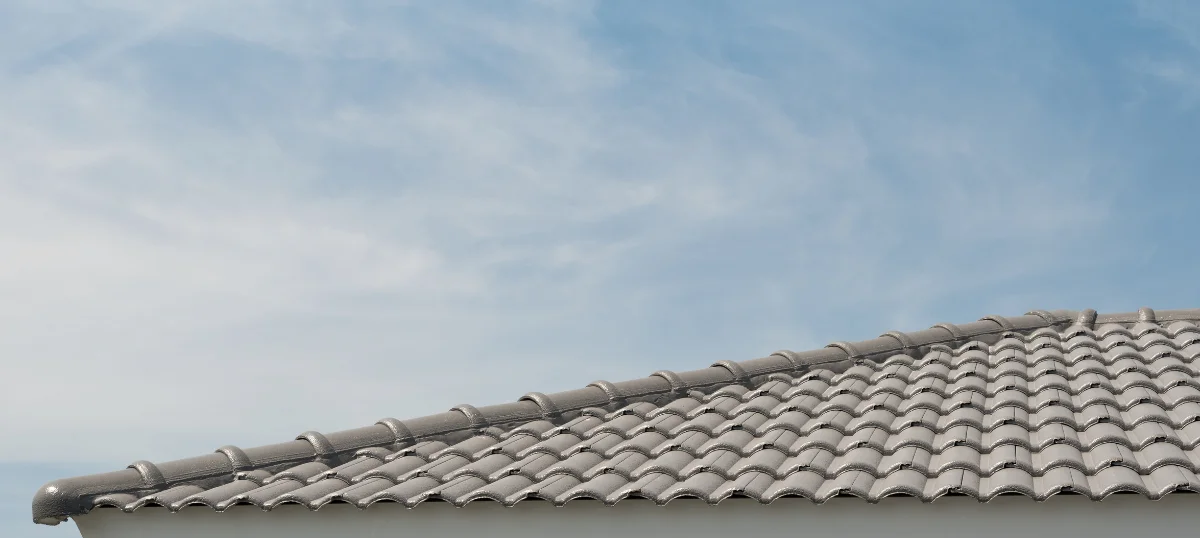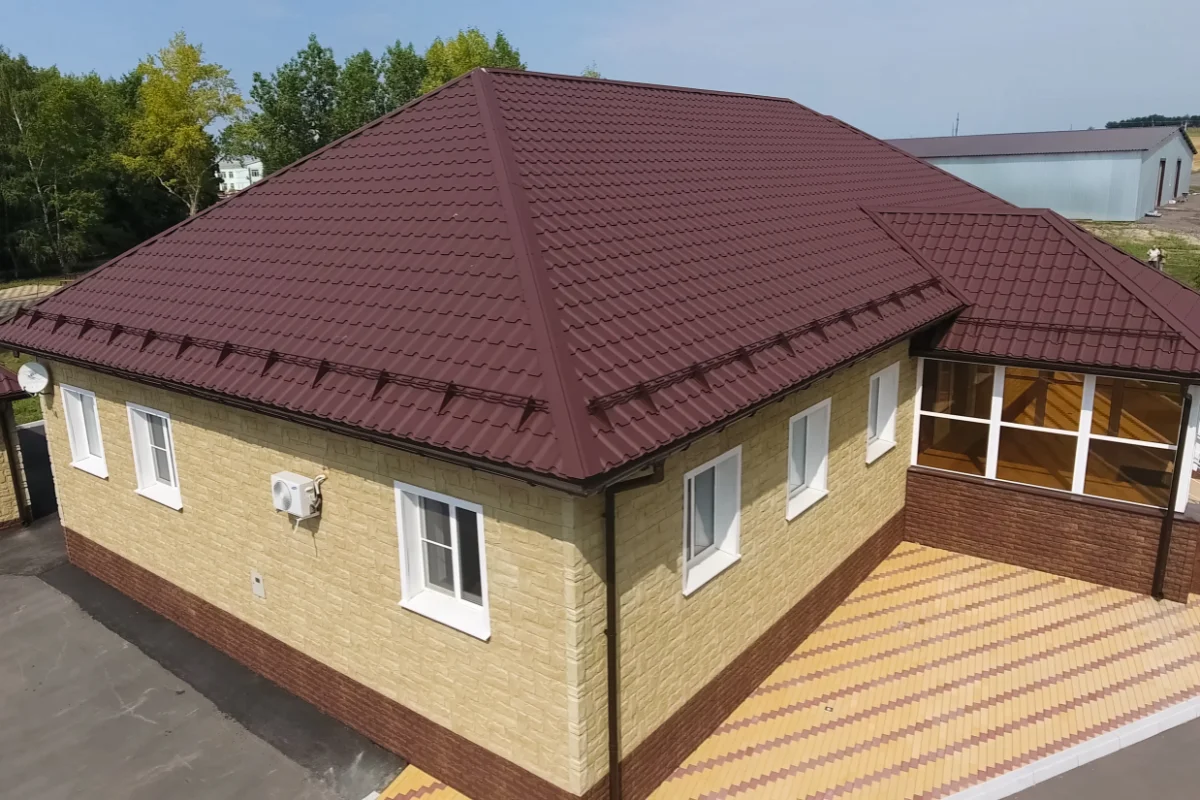Struggling to decide between shingle or tile roofing? Look no further. Our most recent blog post thoroughly compares the expenses associated with shingle versus tile roofing, providing every detail you need to make an informed decision about the best roofing choice for you.
When you’re done reading, you’ll know how each of these popular roofing options impacts the roof cost and be able to walk away with the core knowledge on Shingle vs. Tile Roof Cost Comparison.
Shingle vs. Tile Roof Cost Comparison: Roof Tiles or Asphalt Shingle Tile?
Roofs are a critical home component, but not all roofing materials provide the same features.
Each material, from roofing asphalt to clay tiles, has unique properties that homeowners should consider.
Shingle Roofing
You might be familiar with asphalt and composite materials being used for shingle roofs.
They’ve become popular due to their affordability and durability. But what makes these components special?
Asphalt, a petroleum product mixed with minerals, is known for its waterproof surface, protecting your home from water damage.
On the other hand, composite roofing mixes various materials such as fiberglass and recycled paper products, creating an eco-friendly option.
Plus, it gives more design flexibility because you can mold it into many shapes.
Tile Roofing
If elegance is on top of your list when choosing roof material, then tile roofs might catch your interest.
Slate tiles provide timeless beauty while offering exceptional longevity; some have been known to last over 50 years.
Terracotta tiles bring a Mediterranean charm and superb fire resistance due to their kiln-fired nature.
The choice between shingle and tile roofing isn’t just about aesthetics and practicality. It would be best to consult factors like cost, maintenance, and durability about your home’s location and climate conditions.
So, Which is Better: Roof Tile vs. Shingle Roofing?
Sure, now you know the types, but do you know which is better for your home? Allow us to weigh the pros and cons of each material below!
Pros and Cons of Shingle Roofs
Choosing a shingle roof for your home is one to take seriously. Let’s examine the advantages and disadvantages of this widely used roofing material.

Benefits of Shingle Roofs
A significant advantage of shingle roofs is their cost-effectiveness since shingles are cheaper than tile.
In addition to affordability, shingle roofs offer versatility in design options.
They come in various colors and styles that can match any architectural style or personal preference.
Shingles are also relatively easy to install compared with other roofing materials.
This means quicker installation times, which translates into lower labor costs.
Cons of Shingle Roofs
But like anything else in life, shingle roofs have some drawbacks.
The first thing you need to consider is durability.
While they might be cheaper initially, these roofs tend not to last as long as their tile counterparts primarily because asphalt or composite materials aren’t quite as hardy against weather elements over time.
This leads us to another downside: Maintenance – given their susceptibility to damage from extreme conditions (like high winds and hail), homeowners may need to replace sections more frequently than if they had chosen another type of material, such as slate terracotta tiles.
Sustainability concerns have also been raised about asphalt shingles since they don’t decompose.
Last but certainly least is aesthetic appeal; although many color style options are available, they don’t offer the same elegant look traditional tile roofs can.
Pros and Cons of Tile Roofs
Tile roofs may be your cup of tea if you’re after an elegant, enduring roofing option. But let’s look at the whole picture – both sides of the coin.

The Pros of Tile Roofs:
Tile roofs have a reputation for longevity.
They are resilient against fire, hail, and even high winds. It’s like having a superhero guard your home from above.
This type of roof can also add to the aesthetic appeal of your property.
With options ranging from terracotta to slate tiles, it offers more variety in style than traditional asphalt shingles.
Imagine pulling into your driveway each day with that striking beauty greeting you.
The Cons of Tile Roofs:
Now, onto some potential deal-breakers – starting with cost.
A full-fledged tile roof doesn’t come cheap; it demands deeper pockets than its shingle counterpart.
You might wonder why.
Besides their premium materials (like slate or terracotta), installing these heavyweights requires specialized skills, which means higher labor costs.
Beyond cost considerations, though, is another hurdle: weight.
Tiles are significantly heavier than most other roofing materials.
Weight is a factor that should not be overlooked, as it can have severe consequences for the structural integrity of your home.
Finally – tile roofs also require regular maintenance, mainly if you live in areas prone to freezing temperatures or sudden temperature swings.
Just imagine those tiles going through their version of a hot-cold spa treatment daily – it could lead to cracking over time.
This means that while these roofs may have a longer lifespan than other materials, maintaining them can be challenging.
Installation Process: Tile Roof vs Shingle
The installation process differs between these two types.
Shingles are easier and faster to install as they’re lightweight compared to tiles, which require additional structural support due to their weight.
So, if you need quick installation, and want something less high-maintenance, you should opt for shingles.
Make an Informed Decision When Selecting Roofing Material Installed
When choosing between a shingle and tile roof, homeowners are often torn.
But don’t worry. Oaks Roofing and Siding is here to help you make that choice confidently.
The size of your abode is a significant factor when determining which roofing option will be the most cost-effective.
If budget isn’t your primary concern but durability and aesthetics are high on your list, tiles may win out over shingles for you.
Tile roofs tend to come at a premium compared with their shingle counterparts mainly because they’re made from natural materials like slate or terracotta rather than asphalt or composite materials used in making shingles.
- Shingle Roofs: If budget is your top priority – perhaps because this roofing project has cropped up unexpectedly – then asphalt or composite-based shingle roofs would likely be best suited since they’re less expensive initially.
- Tile Roofs: If long-term benefits outweigh immediate costs, investing in more durable yet aesthetically pleasing tile roofs could be more innovative. These are often more weather-resistant and can last much longer than shingles.
The final choice, however, should always depend on what’s best for you.
Your personal preferences, home size, and budget will help guide this decision.
Remember that Oaks Roofing and Siding is here to give expert advice based on our wealth of experience installing both roofing materials.
Factors Influencing Roofing Material Costs:
The roofing cost can be drastically different depending on a host of elements.
Each element significantly determines the final price tag, from the size and pitch of your roof to the materials used.
Unsurprisingly, larger homes will require more materials and labor for roofing projects.
A smaller home might get away with spending less, but don’t be fooled into thinking you’ve saved money just yet.
Larger homes need more raw materials and demand longer working hours from contractors, which increases labor costs significantly.
Beyond square footage, other variables contribute to how much you’ll shell out for a new roof or repairs on an existing one.
- Pitch: Steeper roofs are trickier – they call for exceptional safety measures during installation and often take longer than their flatter counterparts.
- Type of material: The choice between asphalt shingles or elegant tiles like slate or terracotta can dramatically affect pricing due to material costs and installation complexity differences. This detailed breakdown provides valuable insights into the different roofing options available.
Rooftop accessibility is another key factor impacting total expenses.
Roofs that are difficult to reach may necessitate specialized equipment, adding to overall charges.
Location, too, has its say; regions prone to extreme weather conditions may warrant more potent (and pricier) materials, while certain localities could have higher labor costs.
Finally, the age and condition of your existing roof can also influence expenses.
Older roofs might need more extensive work to prep for a new covering or even require structural repairs before a new installation is possible.
Environmental Impact: Roof Tiles vs Shingles
If you’re considering a roof replacement or installation, it’s essential to understand the environmental impact of your choices.
Two popular options are shingle and tile roofs. Both have their pros and cons when it comes to cost, durability, and sustainability.
Sustainability of Shingle Roofs
Shingle roofs are typically made from asphalt, which is derived from petroleum.
This makes them less environmentally friendly as they contribute to fossil fuel consumption.
However, some manufacturers have started recycling old shingles into new ones or other products like road pavement (source).
Despite these efforts, many used shingles still end up in landfills due to a lack of recycling programs.
Eco-Friendliness of Tile Roofs
In contrast with asphalt shingles, tiles (either clay or concrete) are made from natural materials that can be sustainably sourced (source).
They also last longer than asphalt shingles—upwards of 50 years—which means fewer resources go into replacing them over time.
The manufacturing process for tiles is more energy-intensive than for asphalt shingles; however, once installed on a home’s roof, they provide excellent insulation properties, reducing heating/cooling costs, thus contributing positively towards energy efficiency.
Spend Less Time Comparing Tile to Roofing Shingle; Contact Our Team of Roofing Contractor Pros Today!
We’ve journeyed far and wide in our Shingle vs. Tile Roof Cost Comparison adventure.
Remember, roofing materials are unique characters in your home’s story. Each has charm, from the humble asphalt shingles to elegant slate or terracotta tiles.
Certainly, shingle roofs can be kinder on your wallet upfront. But tile roofs make a lasting statement with their durability and aesthetic appeal.
Weighing the pros and cons is crucial. Home size? Budget? Aesthetics? Lifespan expectations?
All these factors will guide you toward an informed decision that best suits your needs.
Ultimately, your roof is more than just shelter – it’s part of your home’s narrative!
Don’t hesitate to reach out to any one of our Oaks Roofing experts to make the choice a lot easier.
FAQs: Shingle Vs. Tile Roof Cost Comparison
Is a tile roof more expensive than shingles?
Yes, typically, tile roofs cost more than shingle ones because of the materials used and their longevity.
What is the most affordable type of roof?
The most wallet-friendly roofing option is asphalt shingles due to material costs and ease of installation.
What is the most expensive roof system to install?
The priciest roofing systems are generally made from slate or high-end metal, offering top-notch durability and aesthetic appeal.
Is a tile roof better than shingles in a hurricane?
Absolutely. Tile roofs usually outperform shingles during hurricanes thanks to their hefty weight and strong wind resistance.

